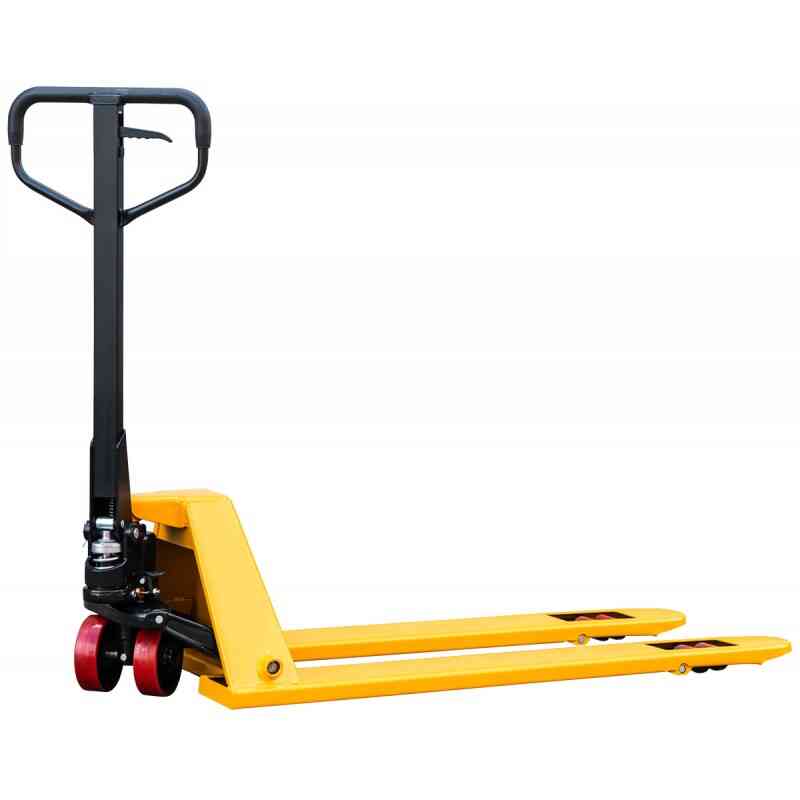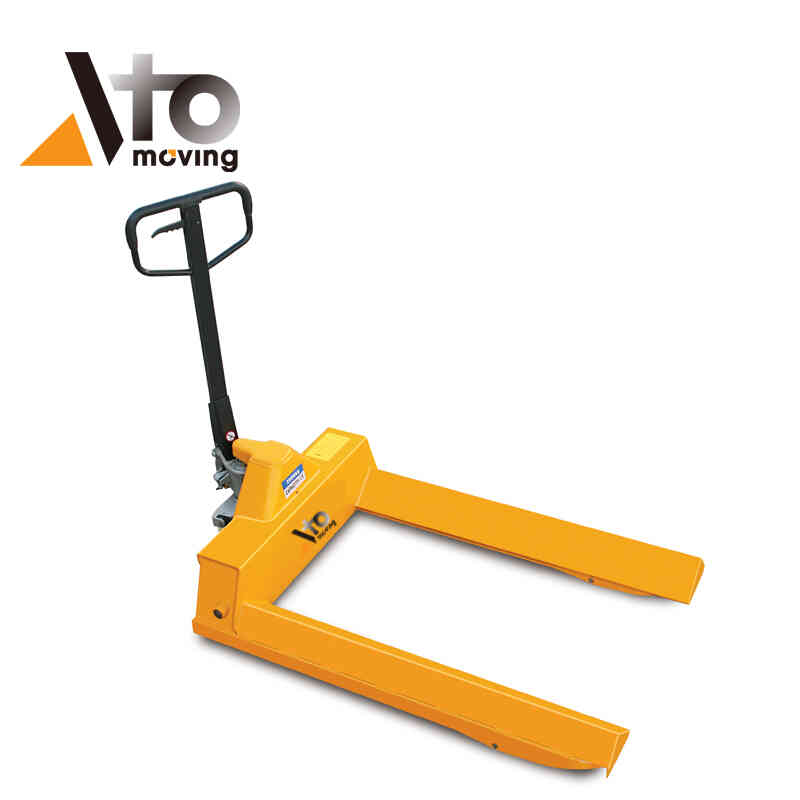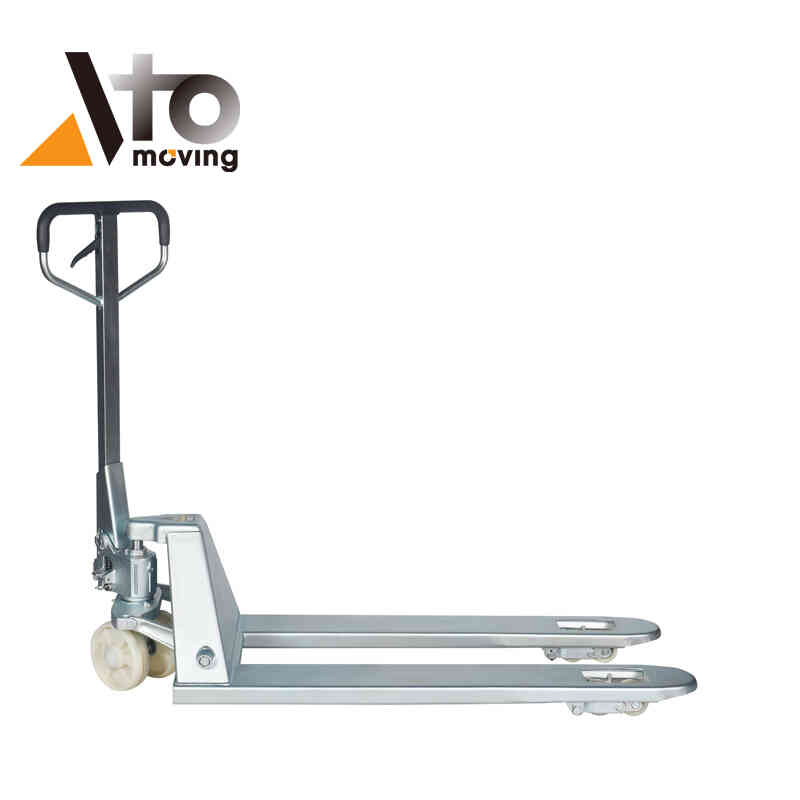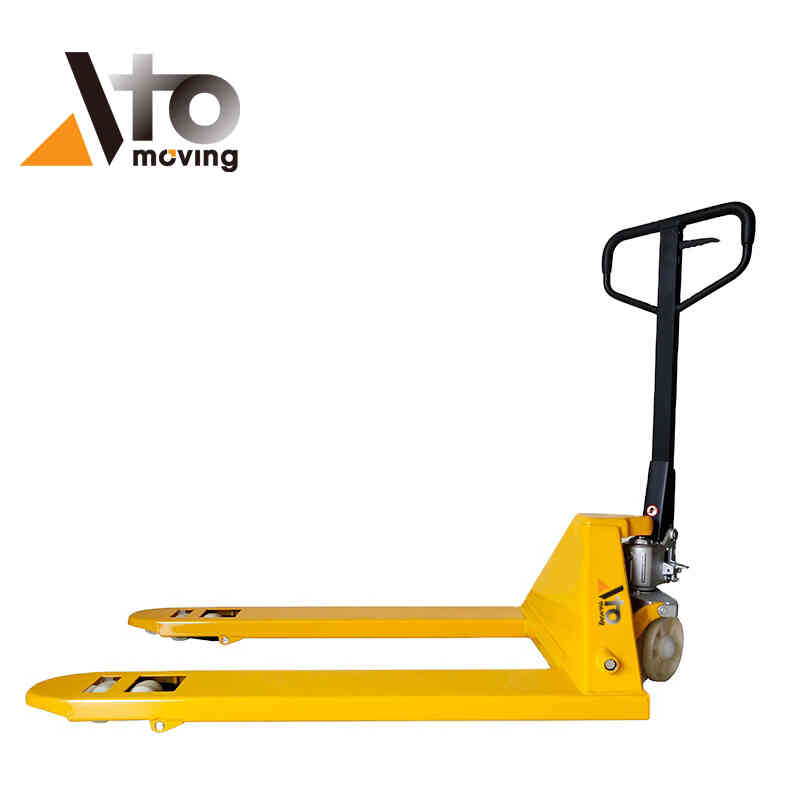Atomoving
Manual Pallet Truck
Hand Pallet Truck-Durability that Stands the Test of Time
Atomoving’s hand pallet truck is designed with durability at its core, featuring a robust construction that emphasizes the use of steel, particularly at points of critical stress. This durability is further bolstered by several key design elements, including a reinforced lower handle for improved control and longevity, strong C-channel forks constructed from thick steel to handle heavy loads, cross braces that enhance structural integrity, and thick formed steel lift link arms and box-style push rods for increased stability and strength. These features collectively ensure the hand pallet truck delivers sustained high performance and resilience, even in demanding material handling environments.
HP Series Hand Pallet Truck
HPL Series Hand Pallet Truck
More Hand Pallet Trucks
Frequently Asked Questions
What is a hand pallet truck?
A hand pallet truck, also known as a pallet jack, pallet pump, pump truck, or jigger, is a fundamental tool in material handling, designed for lifting and moving palletized loads across short distances.
Characterized by a wheeled trolley equipped with two tapered forks, its operation is facilitated by a pump-action handle that raises and lowers the load through a hydraulic jack mechanism.
This simple yet effective lifting method allows for the easy transportation of goods within various environments such as warehouses, stockrooms, and industrial facilities. Available in manual, electric, and compact variations, hand pallet trucks cater to a wide range of applications, offering significant advantages such as user-friendly operation, increased productivity, and low maintenance requirements. As a result, they stand out as a versatile, cost-effective solution for numerous material handling tasks.
How many types of manual pallet trucks are there?
- Standard hand pallet truck: The most basic and common type of manual pallet truck, with typical fork dimensions of 27″ x 48″ and a weight capacity of up to 5000 kg. They lift loads between 85 and 200 mm off the ground.
- Low profile pallet truck: Designed to handle low profile pallets, thin style pallets, and low stillages that standard pallet trucks cannot access. They have a very low lowered fork height, typically 1.5″ to 2″.
- Stainless steel pallet truck: Made from stainless steel to withstand water and corrosion, ideal for use in agriculture, pharmaceutical, chemical, food or medical industries.
- Hot dipped galvanized pallet truck: Similar to stainless steel but more cost-efficient, with the frame, forks and handle galvanized to ensure full corrosion resistance.
- Weighing scale pallet truck: Has a built-in weighing scale to identify the weight of the load being moved, in addition to functioning as a normal pallet truck.
- Rough terrain pallet truck: Designed to move palletized goods over rugged and uneven ground outdoors, with ergonomic design and durable wheels.
- Mini pallet jack: A compact, lightweight and foldable pallet jack with around 1100 lbs capacity, small enough to fit in a truck.
So in summary, there are at least 8 distinct types of manual pallet trucks designed for different applications, load sizes, environments and special requirements. The choice depends on the specific material handling needs of the business.
Do you need training to use a manual pallet truck?
Yes, while OSHA does not require a formal certification to operate a manual pallet truck, employers are still responsible for providing adequate training to ensure safe operation. Here are the key points regarding training for manual pallet trucks based on the search results:
- OSHA classifies motorized pallet jacks as powered industrial trucks under 29 CFR 1910.178, requiring operators to be certified through formal instruction, practical training, and a performance evaluation. However, this certification requirement does not apply to manual pallet jacks.
- Even though certification is not mandated, the Provision and Use of Work Equipment Regulations 1998 (PUWER) in the UK stipulate that employers must provide training for the use of all work equipment, including manual pallet trucks, to ensure health and safety.Similar regulations likely apply in the US.
- The Manual Handling Operations Regulations 1992 also apply to manual pallet trucks, as their use involves pushing, pulling and moving loads using bodily force. These regulations state it is essential that training is provided in the proper use of handling aids like manual pallet trucks.
- Many employers overlook the need to train workers on this relatively simple piece of equipment. However, while manual pallet trucks may seem easy to use, safe handling requires skill and training is important to prevent injuries.
- Employers should provide training covering the proper use of manual pallet trucks, including how to safely maneuver loads, maintain stability of the load, operate at a controlled speed, park the pallet truck safely, and use appropriate personal protective equipment.
So in summary, while OSHA does not explicitly require certification for manual pallet truck operators like it does for motorized pallet jacks, employers still have a legal and ethical obligation to provide workers with proper training on the safe use and handling of manual pallet trucks to prevent accidents and injuries on the job. Overlooking this training requirement can lead to costly consequences.













